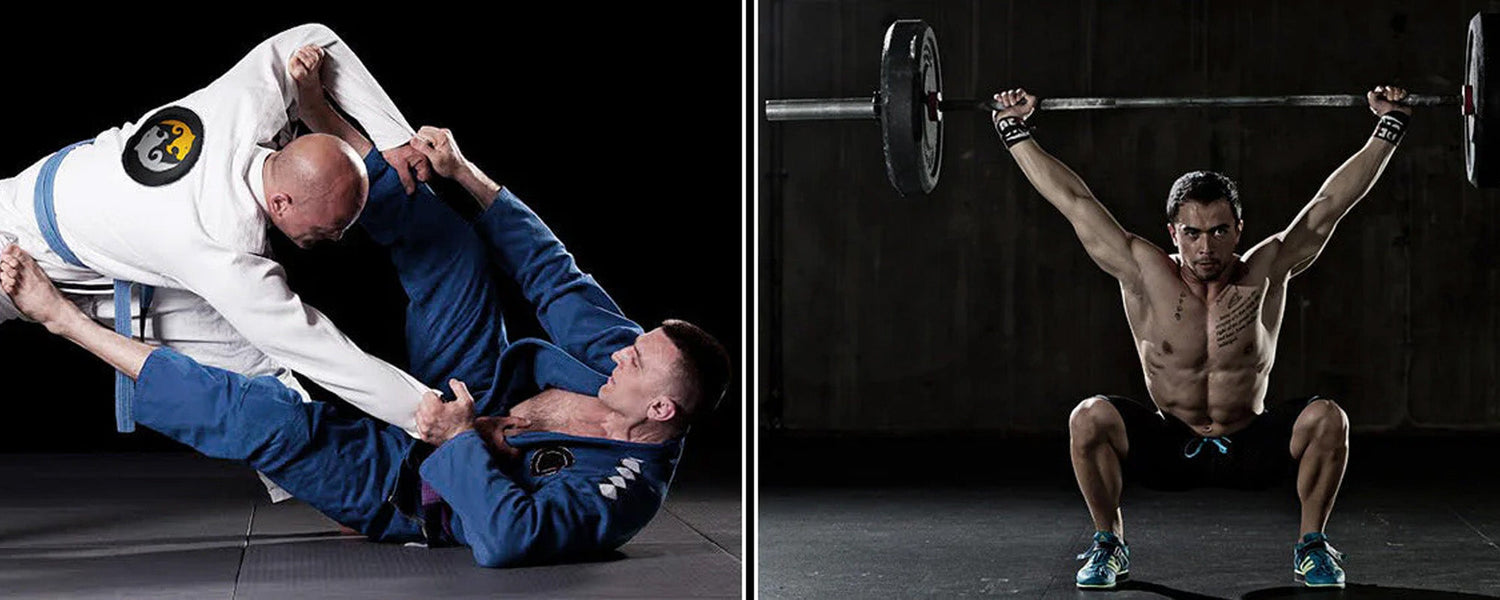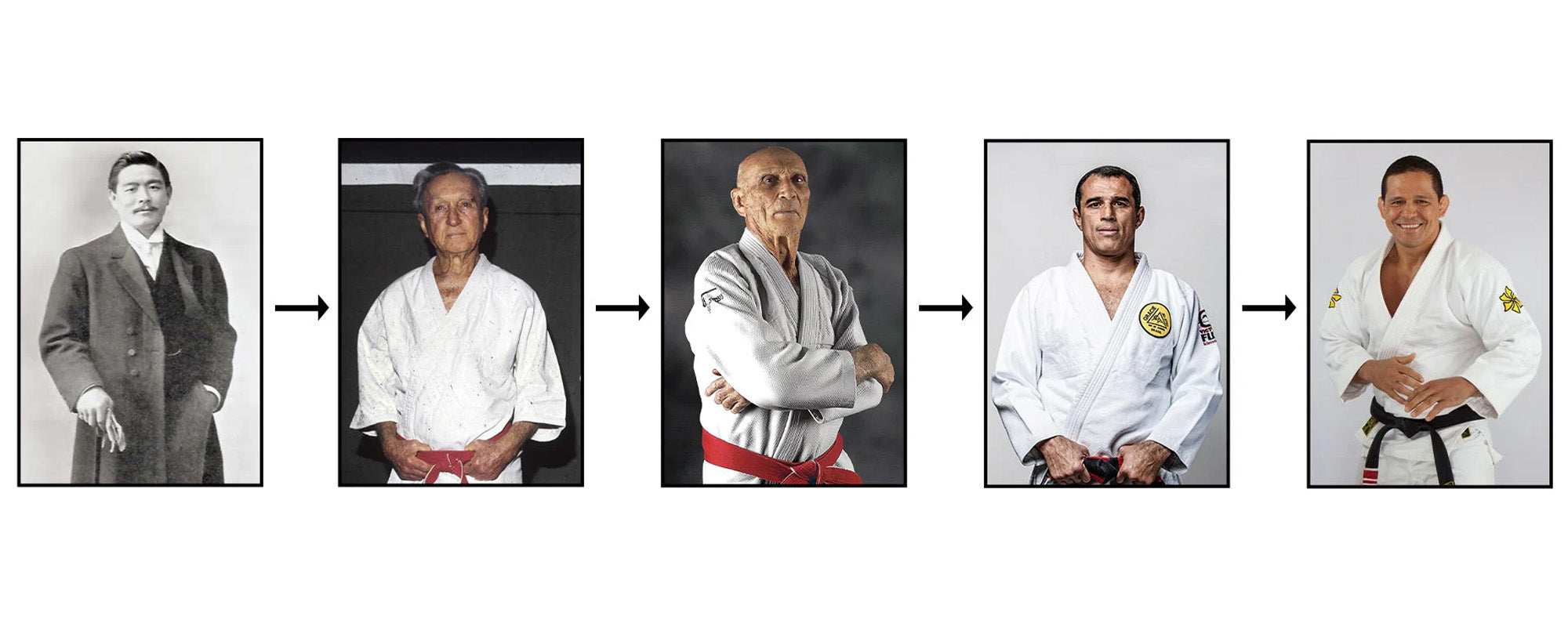Table of content
Brazilian Jiu-Jitsu was designed as an art that includes self-defense techniques and enables a weaker person to overcome a stronger one with techniques. But with the passage of time, this art took the form of sport. BJJ is now being hosted by a number of organizations all over the world and has become a famous sport in European countries.
This popularity attracted a lot of people to join BJJ. Nowadays, grapplers struggle to become more conditioned and better skilled. Weightlifting helps to condition our body for BJJ. But continuous heavy weightlifting is not recommended in BJJ because it can cause injuries, tiredness, or cramps and can cause hurdles in your BJJ training schedule.
BJJ rolling and conditioning, both are difficult activities. But when we talk about balancing BJJ and weightlifting, practitioners must plan to incorporate both into their training routines.
1. Combining BJJ and Weightlifting
For most BJJ competitors, this is more than a sport. New students who just join a gym to train in BJJ need to give their 100% input. BJJ practitioners who are focused and coordinate their minds and movements efficiently, tend to learn BJJ techniques earlier. But to uplift your skills in BJJ, body conditioning is crucial.
Body conditioning is necessary to strengthen your muscles. Weightlifting helps to target and condition a specific group of muscles which is essential in the implementation of various BJJ techniques. In the current era, many athletes have successfully maintained a balance by combining BJJ techniques and strength workouts.
Balancing BJJ training with weightlifting is necessary. Weightlifting and BJJ can be incorporated with little effort every day or can be shrunk to a few days a week with a hectic training and weightlifting session.
1.1. Low-Intensity Weight Training with BJJ for 5 Days a Week
Balancing BJJ training and Weightlifting is not easy. Weightlifting can leave your muscles stiff and aching. Sometimes, your BJJ training requires a light weightlifting phase to prevent joint pain and to perform specific techniques.
A good way to balance your BJJ training with weightlifting is that you can continue your training with low-stressed weightlifting and train for 5 days a week. This extensive training time with continuous weightlifting sessions will help to perform extraordinarily on the mat.
1.2. High-Intensity Weight Training with BJJ for Three Days a Week
Most BJJ competitors are also involved in many other essential mundane activities like school, business, or office-related work. They did not have a lot of time (5 days a week) to train in BJJ. Some BJJ practitioners might have the stamina to perform high-intensity weightlifting with BJJ training.
Such people can do BJJ rolling with high-intensity weightlifting 3 days a week. This is enough time to learn and understand grappling art. Furthermore, this training schedule gives practitioners proper time to get complete rest and get ready for another week to follow their schedule.
1.3. Training Schedule for BJJ Competitors
Making a schedule for weightlifting and training for a week is very necessary for achieving desired results. Managing your workout with your resting time is crucial. You cannot train continuously with a hectic weight training plan and little rest. Your body needs proper time to recover and prepare for another session of intense training.
Continuous and hectic training routines with heavy weightlifting sessions will deteriorate your health as well as your training schedule and performance. It is essential to plan your schedule in such a way that your body gets some rest.
To fulfill the rest requirements of your body, schedule a high-stressed session in a day followed up by a low-stressed session on the next day. Always start with low-stressed workout training and gradually increase the time and training intensity so that your body can adopt this hectic routine.
In this article, we will share a balanced training schedule for BJJ and Weightlifting sessions in three categories. The basic training period is for daily routine when you are not supposed to compete in any tournament.
But if you are going to appear in tournaments, you have to condition your body beyond the normal routine. We named these schedules the preparatory and competitive periods.



1.4. Training Schedule for BJJ as a Hobby
Some people join BJJ just to ensure good health or as an activity in their spare time. Such people are not supposed to appear in any competition but they want to perform well. This type of BJJ practitioner also has their own work routine in which BJJ is just for fun or for health purposes. These BJJ practitioners cannot do hectic training as this training can make them tired of their mundane or work-related responsibilities.
For such grapplers, three times a week can be enough to understand grappling martial arts and to condition their bodies for BJJ training. Weightlifting sessions are not recommended for hobbyists. They can do strength and power workouts for two to three days.
BJJ training also ensures body conditioning to some extent. The conditioning session on Saturday other than BJJ training is responsible for conditioning the body parts which are not getting stronger and conditioned during BJJ training. Aerobic conditioning is something most important to do outside the BJJ training.
Basic Training
| Monday | Tuesday | Wednesday | Thursday | Friday | Saturday | Sunday |
|---|---|---|---|---|---|---|
| BJJ | Strength and Power Training | BJJ | Strength and Power Training | BJJ | Aerobic Condition and Open Mat | Complete Rest |
After 2 to 3 months of basic training, you can jump to specific training for 4 weeks. After 4 weeks of specific training, again restore your basic training session. This one-month change in your training will make you fit for BJJ training and ensure your health.
Specific Training Period
| Monday | Tuesday | Wednesday | Thursday | Friday | Saturday | Sunday |
|---|---|---|---|---|---|---|
| BJJ | Strength and Power Training | BJJ | Strength and Power Training | BJJ | Aerobic Condition and Open Mat | Complete Rest |
2. Effective Tips for Weight Training as a Grappler
The most effective method to condition your body for BJJ training is that you should find a routine that is suitable for your body type, health, and BJJ style. Weightlifting can help you to condition your body for BJJ if you follow it with proper persistence and under professional guidelines.
Improper weightlifting methods and routines can lead to the deterioration of your health, instead of making your body suitable for BJJ. Here we will discuss some basic tips for weightlifting practices.
2.1. Move from Low Weight to Heavy Weight
The most effective way to conclusive weightlifting practice is that you should start with low-intensity weights and gradually increase the difficulty level.
At the start, your body is in your comfort zone. Do not start high-intensity workouts and avoid putting a lot of pressure which might not be bearable for your body. It can lead to complications, muscle, and joint strains, and can cause reversible or irreversible damages.
Start with low weight. With passing time, slowly increase the intensity of weight. Only lift the weight which you can lift at least 10-12 times repeatedly.
2.2. Control Your Breathing Rate
Proper breathing is crucial while weightlifting and getting its complete benefits. Effective breathing rate during weightlifting training can accelerate the training efficiency. Many students do not take it seriously and do not use their maximum energy in weightlifting.
During weightlifting training, your body is occupied with a hectic task and your muscles need more energy to perform. Deep breathing exercises enable you with the necessary amount of oxygen which increases your metabolism rate to ensure the required amount of energy generation and supply.
If you do not breathe properly while lifting heavy weights, your muscles will not get the required energy. Consequently, cramps or muscular tears can cause you to take a break from your training.
Good breathing activities include deep inhaling through your nose and also exhaling from your mouth. Some students inhale perfectly but are unaware of the importance of exhaling. Proper breathing must include inhaling and exhaling at the same rate.
2.3. Body Posture is Crucial While Weightlifting
Body posture is one of the most important factors in weightlifting. If you are lifting weights with a bad body posture, you are highly exposed to injuries. Maintaining a properly balanced posture is a crucial factor to get advantages from that exercise. Similarly, maintaining good body posture during weightlifting is an important aspect of weightlifting.
Losing balance during weightlifting can cause serious injuries. When you are lifting weights, you are putting a lot of pressure on your muscles and joints. Bad body posture can cause joint problems, fractures in bones, or muscle tears.
2.4. Focus on Muscle Strength and Endurance
Athletes should focus on their muscle power as well as muscle strength. Muscular power and strength can help a grappler to overcome challenges and take down their opponent. Weightlifting increases the size as well as strength of the muscles. It is also effective for muscular conditioning and hypertrophy.
BJJ practitioners who are expected to appear in competitions should do weightlifting sessions regularly to make their muscles capable of performing well while bearing pressure. Stronger muscles are helpful to pass the guard, sweep, takedown, overcome your opponent and delay or defend submission.
2.5. Take Proper Rest
When you are lifting weights, your muscles are facing a lot of pressure and executing their maximum efficiency. After weightlifting, your muscles may need a complete rest.
While resting, your body will recover from the muscle fatigue, muscle tears, and strains and prepare you for another day of training. To avoid serious damage to your body, do not lift heavy weights without taking recovery time. Follow one day of high-intensity training, followed up by a light training day.
2.6. Do Not Ignore Pain
If you are lifting some heavy weight that is causing pain in any part of your muscles or joints, stop doing it or replace it with low-weight training. To avoid damage, start with a low weight and gradually increase the difficulty level.
2.7. Be Careful While Choosing Weightlifting Method
There are a lot of methods for weightlifting which can be adopted by grapplers to condition their bodies and to get stronger. You can start with your own weight and do hang-ups or chin-ups.
Choosing a suitable weightlifting method is also an important factor. You should opt for the weightlifting method according to your body weight, your BJJ style, your stamina, and your desired goals.
3. Takeaways
Weightlifting is helpful in body conditioning and muscle building. But incorporating and balancing weightlifting training with your BJJ training is important and can be a bit challenging especially in the start. Heavyweight and low-weight training can be performed on alternate days.












Leave a comment
This site is protected by hCaptcha and the hCaptcha Privacy Policy and Terms of Service apply.